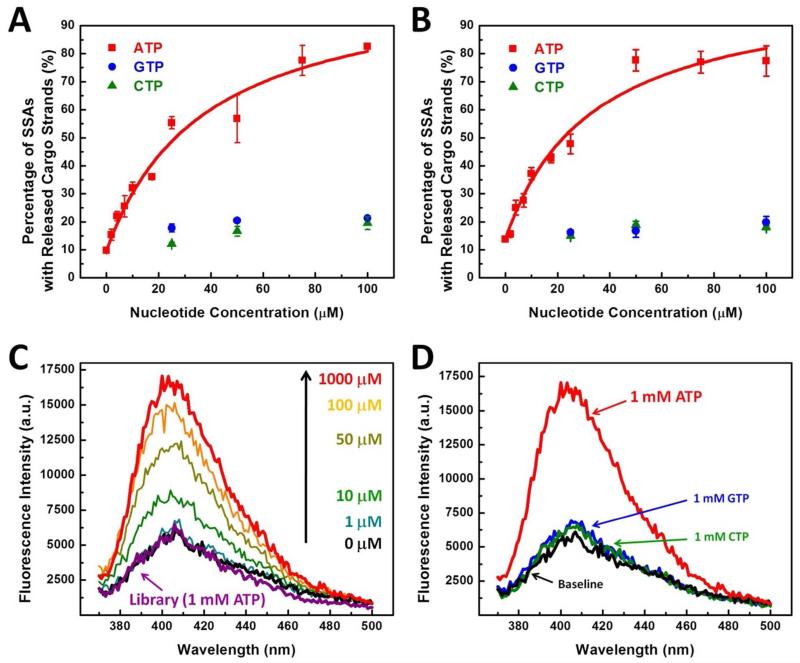Figure 3.
Sensitivity and target specificity of SSA molecules. RT-PCR measurement of SSA-1 (A) and SSA-2 (B) release from magnetic beads in response to different concentrations of ATP or closely related non-trigger molecules. Both SSAs showed a strong structure-switching response to ATP (red), yielding EC50 values of 37.6 ± 8.8 μM and 33.7 ± 7.8 μM for SSA-1 and SSA-2, respectively, at a 30 nM concentration of SSA/cargo strand (1:1.5 ratio). This response was highly specific to ATP, and the fraction of SSAs released by GTP (blue) or CTP (green) was negligible. (C) In the absence of ATP, the ATMND cargo remains sequestered within the abasic site of SSA-1 and emits weak fluorescence signal due to quenching within the duplex structure (black). As the ATP concentration increases, the intensity of fluorescence monotonically increases, with 1 mM ATP yielding a ~170% increase in fluorescence (red) compared to the ATP-free control. In contrast, the response of the unselected random library treated with 1 mM ATP (purple) is indistinguishable from the negative control. (D) SSA-1 emits a strong fluorescent signal in response to 1 mM ATP (red), while GTP (blue) and CTP (green) yield only a negligible increase.

